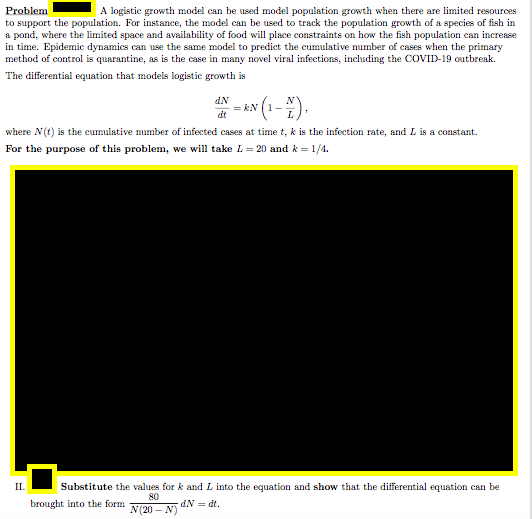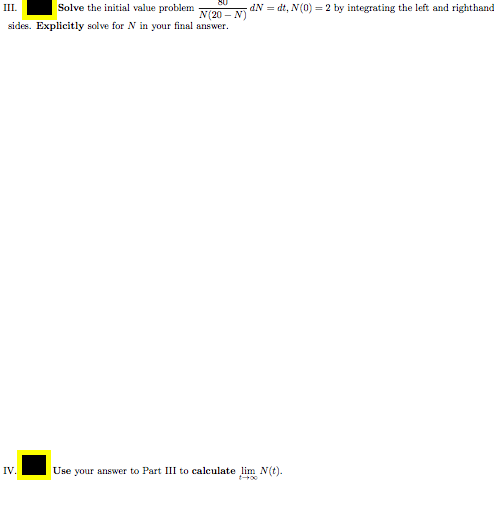A logistic growth model can be used model population growth when there are limited resources to support the population. For instance, the model can be used to track the population growth of a species of fish in a pond, where the limited space and availability of food will place constraints on how the fish population can increase in time. Epidemic dynamics can use the same model to predict the cumulative number of cases when the primary method of control is quarantine, as is the case in many novel viral infections, including the COVID-19 outbreak. Problem The differential equation that models logistic growth is -ax(1-#). NP = kN dt where N(t) is the cumulative number of infected cases at time t, k is the infection rate, and L is a constant. For the purpose of this problem, we will take L = 20 and k = 1/4. П. Substitute the values for k and L into the equation and show that the differential equation can be 80 brought into the form dN = dt. N(20 - N) III. Solve the initial value problem dN = dt, N(0) = 2 by integrating the left and righthand N(20 -. - N) sides. Explicitly solve for N in your final answer. IV. Use your answer to Part III to calculate lim N(t).
Angles in Circles
Angles within a circle are feasible to create with the help of different properties of the circle such as radii, tangents, and chords. The radius is the distance from the center of the circle to the circumference of the circle. A tangent is a line made perpendicular to the radius through its endpoint placed on the circle as well as the line drawn at right angles to a tangent across the point of contact when the circle passes through the center of the circle. The chord is a line segment with its endpoints on the circle. A secant line or secant is the infinite extension of the chord.
Arcs in Circles
A circular arc is the arc of a circle formed by two distinct points. It is a section or segment of the circumference of a circle. A straight line passing through the center connecting the two distinct ends of the arc is termed a semi-circular arc.
See picture for question


Trending now
This is a popular solution!
Step by step
Solved in 6 steps with 10 images






